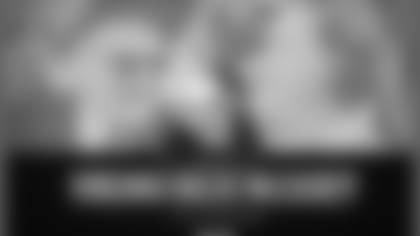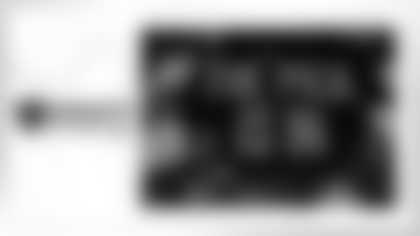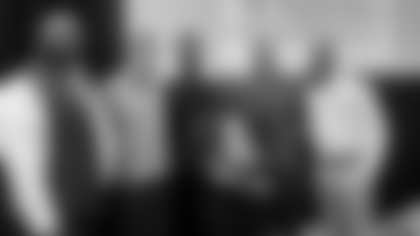Through the first 15 minutes of Sunday's game against the Texans, the Bears racked up 110 rushing yards. The Bears attacked the ground game by utilizing jet sweeps, multiple running backs and quarterback Justin Fields' legs.
In the second quarter, the run game slowed a bit, but still accounted for 76 yards; however, the Bears knew they wanted to pick it back up after halftime. So, on their first play of the third quarter, running back Khalil Herbert exploded for a 52-yard run, reaching Houston's 23-yard line.
"I think we started out pretty hot with the run game and we kinda fizzled out there in the middle of the first half," tight end Cole Kmet said. "We wanted to get back to that wide zone scheme there to start the half, and it presented really well and Khalil hit the hole hard. We were able to kinda spark this a little bit with the run game going in the second half. It definitely provided a lot of energy to the offense."
Kmet said everyone executed their blocks, pushing the Texans' defense to the outside, then Herbert "put his foot in the ground and obviously hit the hole."
Four plays later, Herbert punched in the go-ahead score from one yard out, reaching the end zone for the second time on Sunday. The running back's first TD was another all-around effort from the offense.
On first-and-10 from the 11, Fields handed off to Herbert, who eluded tacklers while the offensive line, fullback Khari Blasingame and Kmet blocked their assignments through the whistle.
"That was a good play," Kmet said with a big smile. "That was a fun play. We moved the line of scrimmage there. That was really cool to watch. Guys were pumped up today watching that in film. It was pretty cool."
The Bears finished the win with 281 rushing yards, their most since recording 283 yards on the ground against the Cowboys on Sept. 30, 1984.
Watching from the sideline, defensive end Robert Quinn saw how efficient the run game was and said that level of production is "demoralizing" to a defense.
"If they can constantly pick up, three, four or five yards by simply running it, it can get frustrating," Quinn said. So, if our offense can run the ball all game long, pick up four or five yards a pop, it may not look flashy—the deep, bomb passes and all the stuff like that—but it's efficient, they're scoring points and giving us time to rest. So, there's nothing to complain about. I think it's demoralizing to the other team, and for us, in a sense, it's boss ball. We basically own the line of scrimmage."
Quinn and the Bears defense were previously on the receiving end of a productive run game against the Packers, who recorded 203 yards on the ground in Week 2.
Coach Matt Eberflus said cleaning up the run defense along with tackling were point of emphasis in practice leading up to the matchup with Houston. The extra focus paid off as the Bears defense held the Texans to 92 rushing yards and an average of 3.8 yards per rush.
"I think last week we gave up close to 200 yards rushing, too, so you never want what I just said about our offense this week, demoralizing when you can't stop the run," Quinn said. "To bring it back to this week, to have a better control of the game on defense we have to stop the run to try to make them one-dimensional. Keep them from us being on our heels, and that is, in a sense, a manhood type of thing. If you want to stop the run, as a coach said to me, 'blow our neck or earn your check.' You just gotta man up and do your job."







